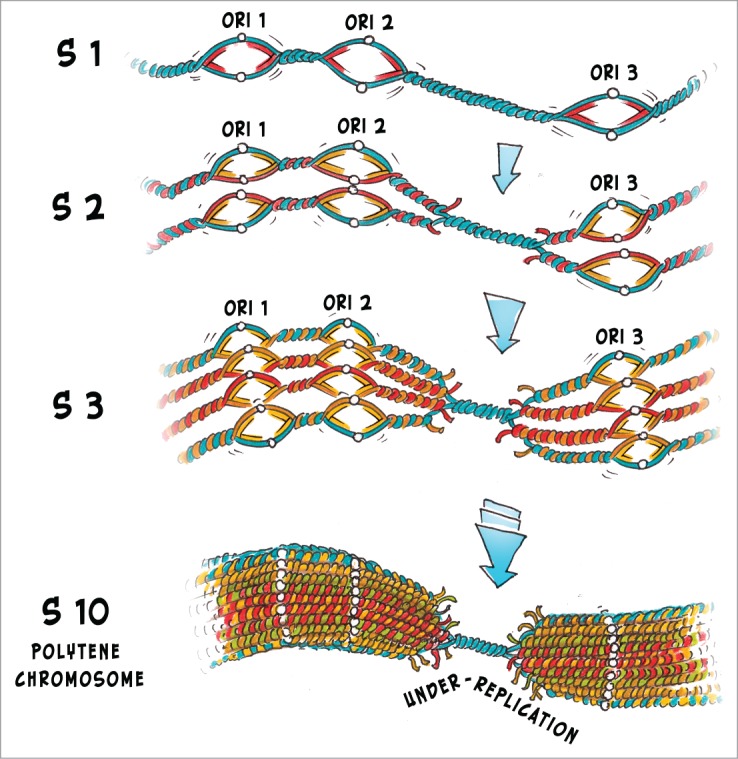Figure 1.

Replication and under-replication in polytene chromosome. Endocycles (cell cycles lacking mitosis) in salivary gland cells start early in Drosophila melanogaster embryogenesis. Replication begins at multiple sites - origins of replication (ORI 1, ORI 2 and ORI 3 on the scheme). By the end of the first S-phase (S1) the amount of DNA doubles along the most of the chromosome, apart from the heterochromatic regions where replication forks fail to collide before the next endocycle begins. This local under-replication occurs for 2 main reasons: (i) larger distance between ORI2 and ORI 3, because in heterochromatin origins are depleted; and (ii) slower replication progression through the repressed regions due to chromatin compaction. During the next S-phases (S2 and S3) the number of DNA strands increases and under-replication becomes dramatic. After 10 endocycles (S10) the polytene chromosome consisting of about 1000 DNA strands is formed. The under-replicated heterochromatic regions appear as specific constrictions on the polytene chromosomes.
